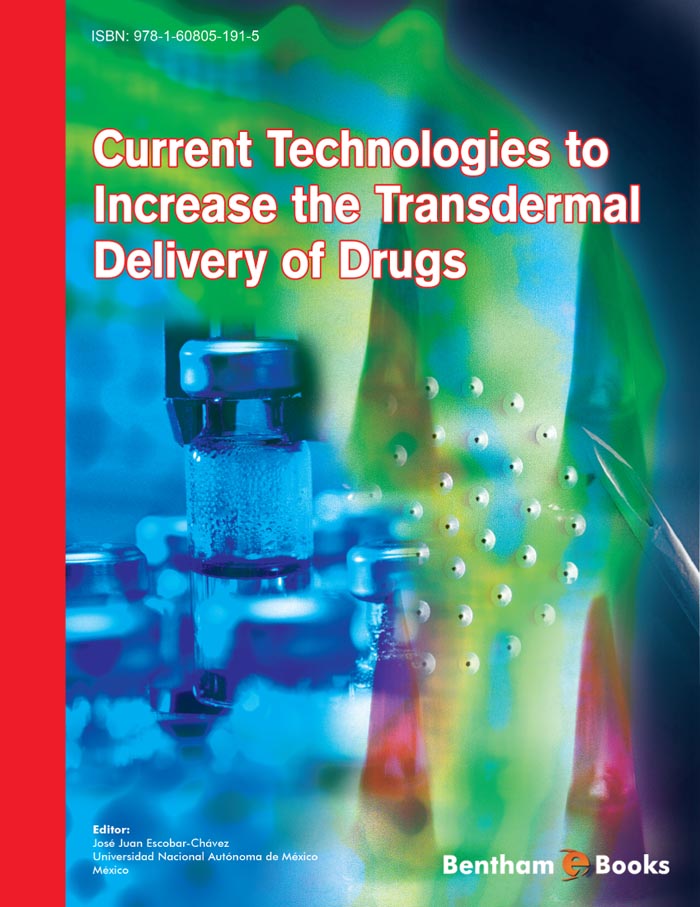The proposed e-book provides an overview of current technologies to increase the topical/transdermal delivery of drugs, its protocols, advantages and limitations and an emphatic point in the uses and applications of these mechanisms. For this reason, this e-book provides exclusive chapters on Chemical Enhancers, Iontophoresis, Sonophoresis, Electroporation, Microneedles and more recently the use of micro/nanoparticles to deliver drugs throughout the skin.
Currently, there are no exclusive books available on techniques to increase the topical/transdermal drug delivery addressing each of the techniques mentioned above in a deep and detailed way. Brief chapters and books describing only one of the methodologies are available to readers only in some drug delivery or toxicology books. For these reasons, a more detailed discussion of current mechanisms to increase the penetration of drugs through skin is currently needed. This book presents a general overview of the theoretical and practical aspects of iontophoresis, electroporation, sonophoresis, microneedles, chemical enhancers and transdermal nanocarriers systems on the delivery of transdermal drugs. Such a generalized approach would be helpful in drug discovery, drug delivery and toxicological research.
A comprehensive book which provides the basis, the practical techniques and updated research information is necessary, for this reason this e-book will be an interesting option that could be used by students of the pharmacy area (biopharmacy, pharmaceutical technology, design and development of drugs, etc.), for the pharmacy and pharmaceutical technology departments of the different Universities all over the world, pharmaceutical technologists, dermatologists, scientists and pharmaceutical R & Ds.
Transdermal drug delivery has several potential advantages over other parenteral delivery methods. Apart from the convenience and noninvasiveness, the skin also provides a “reservoir” that sustains delivery over a period of days. Furthermore, it offers multiple sites to avoid local irritation and toxicity, yet it can also offer the option to concentrate drugs at local areas to avoid undesirable systemic effects. However, at present, the clinical use of transdermal delivery is limited by the fact that very few drugs can be delivered transdermally at a viable rate. This difficulty is because the skin forms an efficient barrier for most molecules, and few noninvasive methods are known to significantly enhance the penetration of this barrier.
In order to increase the range of drugs available for transdermal delivery the use of chemical and physical enhancement techniques have been developed in an attempt to compromise skin barrier function in a reversible manner without concomitant skin irritation. Recently, several alternative physical methods have emerged to transiently break the stratum corneum barrier and also the use of chemical enhancers continues expanding. The projectile methods use propelled microparticles and nanoparticles to penetrate the skin barrier. Microneedle arrays are inserted through the skin to create pores. “Microporation” creates arrays of pores in the skin by heat and RF ablation. Also, ultrasound has been employed to disrupt the skin barrier. All these methods have their own advantages and drawbacks, but a reality is that new developments are expected in the future to make these methods even more versatile.
This e-book reviews the use of chemical enhancers and physical methods as iontophoresis, sonophoresis, electroporation, microneedles and nanocarriers to increase the penetration of drugs throughout the skin. After an introduction, the protocol, advantages and limitations, the focus turns to the relevance of experimental studies. The available techniques are then reviewed in detail, with particular emphasis on topical/transdermal delivery.
José Juan Escobar-Chávez
Departamento de Ingeniería y Tecnología
Sección de Tecnología Farmacéutica
Facultad de Estudios Superiores Cuautitlán
Universidad Nacional Autónoma de México
Av. 1° de Mayo s/n
Cuautitlán Izcalli, Estado de México. C.P 54704
México

